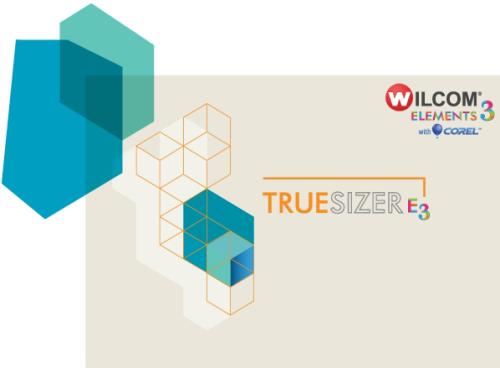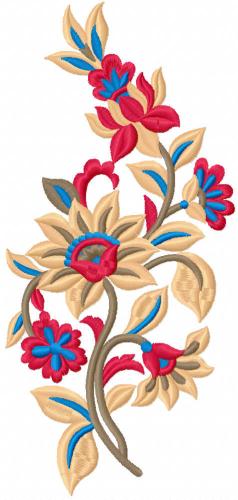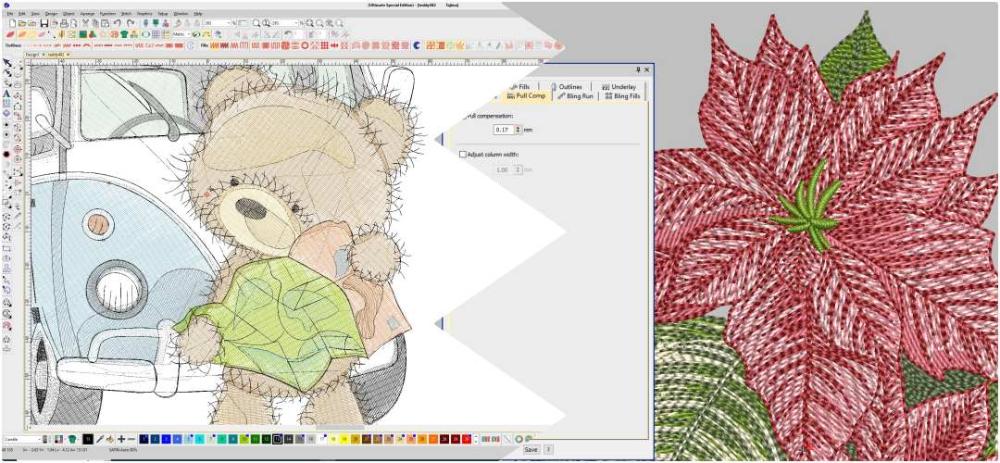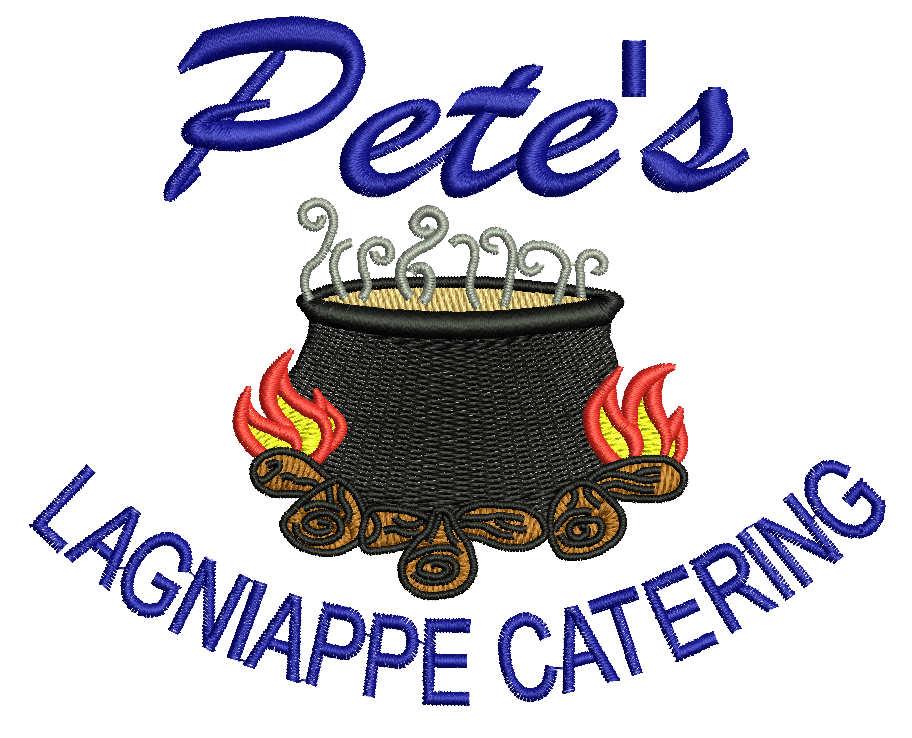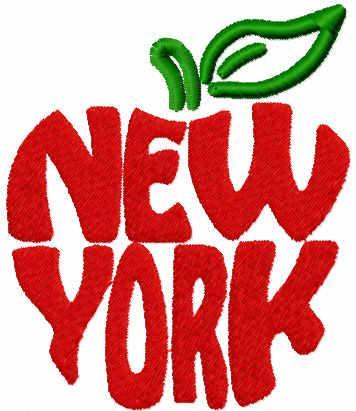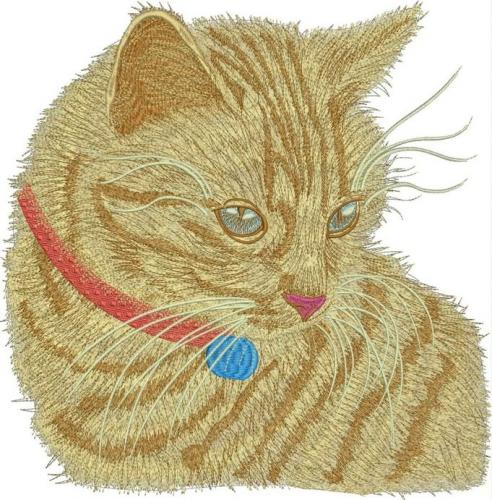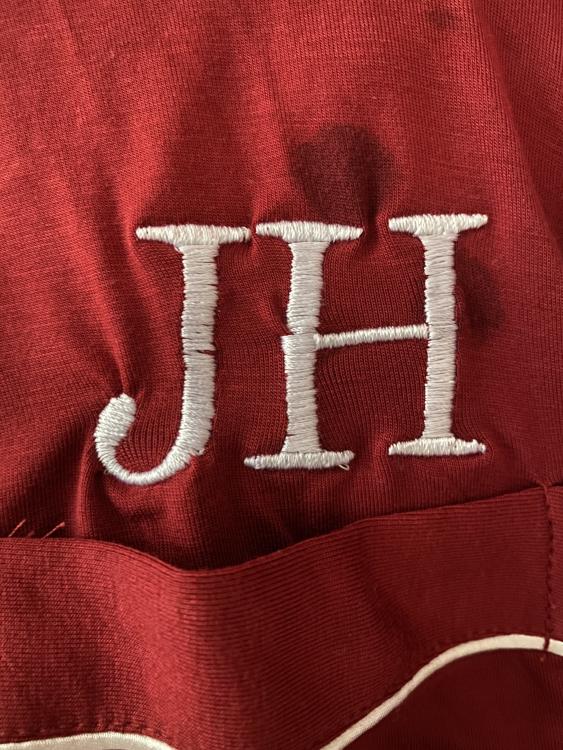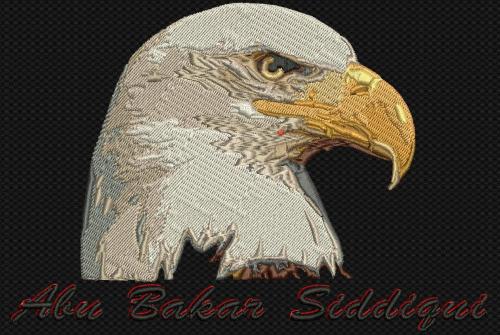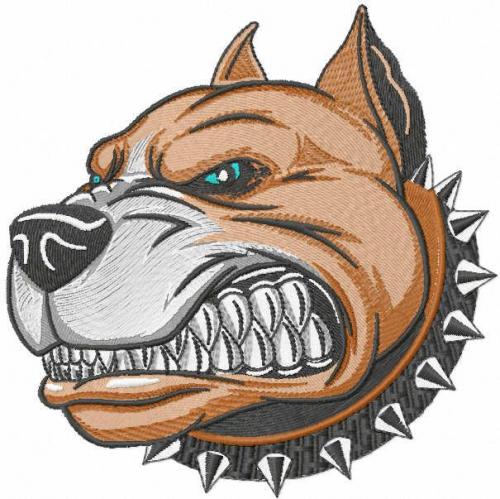Search the Community
Showing results for tags 'wilcom'.
-
File Name: Flower decoration 16 File Submitter: Carol1950 File Submitted: 08 Feb 2014 File Category: Wilcom embroidery elements For convert and resize this embroidery design you can using this free FREE embroidery converter by Wilcom True Sizer: Click here to download this file
-
- wilcom
- free download
-
(and 4 more)
Tagged with:
-
hi all my question is about printing a design information , when we print a design info for color, stitch, and start and end point the software print start\end hearline in red color i want to change the color of that , but i do not know if any one can know about this so please help me . thanks in advance
-
Version EMB support
980 downloads
Embroidery software allows the user to view many different types of design files while also allowing the user to resize the designs and a preview function for potential customers etc. Features: Reading and converting popular formats Resizing and rotating designs Opening and saving .EMB files View multiple colorways In fact, this is an ordinary converter with rather limited functionality and capabilities. There is no way to combine multiple designs together. Also, stitches in machine files are not recalculated when scaling. At the same time, it works quickly and does not slow down. There are enough formats available for work. Therefore, for converting files and rotating designs, this is a very good program and will be useful for many embroiderers.- 2 comments
-
- 4
-

-

-
- wilcom
- true sizer
-
(and 4 more)
Tagged with:
-
I have used Hatch software to convert some pictures to an embroidery designs, they look fine in the Hatch portal and .EMB format but when exported to .PES format the blocks of colour don;t keep their format - the stitches have large ggps in them - any ideas ? Thanks Red Dragon 4.PES Red Dragon 4.EMB
-
Pull Compensation - options for different fabrics When the needle penetrates the fabric and the top embroidery thread connects and wraps around the bobbin embroidery thread it locks and creates a pulling in effect. Most fabrics require that Pull Compensation be added in order to compensate for this push and pull effect brought about when you stitch an embroidery design into the fabric. When stitches are applied to fabric some degree of pull or push may occur. The stitches can either pull the fabric in on the sides or push the fabric out on the ends, adding a small amount of extra stitches in the direction of the angle of the fill or column. Stitch length (long stitches as satin generate more problems), stitch type, density, underlay, fabric type and even type and amount of stabilizers (tear-away, cut-away, water.. etc.) used are factors that can account for the amount of pull or push you might experience. A very simple description is that pull compensation makes an adjustment to the width of the satin or fill stitch area that in appearance seems to not be wide enough. Compensation for pulling is used in 99% of machine embroidery designs. In this case, we used a multi-layer complex design from our collection Teddy Bears Machine Embroidery Designs. Best compensation value for Wilcom ES 2 drills, cotton - 0.20 T-shirt - 0.35 fleece, jumper - 0.40 lettering - 0.2-0 In other words, a gap may be forming between an outline stitch and a fill stitch area which may result in poor registration of the embroidery design. Pull compensation broadens the rows of stitches to adjust for this. You will not always see this problem when digitizing the embroidery design and viewing it on your embroidery software screen (example Tajima Pulse Maestro 13), but when embroidering the design, gaps will appear between fill areas or fill areas and outlines. Satin or Fill stitches Tips: All types of stitches create the push-pull effect, but it is most prominent when you are using Satin stitches or fill (tatami or complex fill) stitches. This push-pull effect is more prominent in large areas of your design such as your complex or tatami fill areas. You do not add push or pull compensation to the run stitches that you are using for a border. If your borders do not stay in registration with your fill area, it is best to make adjustments to the fill area of your machine embroidery design. Pull compensation is only added to two edges of the embroidery design, relative to the angle of the fill (complex fill) area. Visualizing a square object, if the angle of the square is set to either 0 or 180 degrees (for any embroidery software probably any value - Punto Softeamweb -45 degrees), the pull compensation will be added to the horizontal edges of the design; if the angle of the stitching is set to either 90 or -90 degrees, the pull compensation will be added to the vertical edges of the design. Evaluation of your design before the final sew-out is an absolute must. There is a tendency with fill stitches to pull and push the fabric in opposite directions, causing the design to appear distorted. Often, compensation can be made when the embroidery design is digitized (on embroidery software), taking into consideration the fact that there will need to be some pull compensation added to design sections, making adjustments by varying the stitch direction, amount of underlay and the stitch density. An example of when you may need to add pull compensation is when a circle containing fill stitches is outlined with a satin stitch or straight stitch. The two areas may not meet, causing a gap between the outline and the fill stitch. If the circle tends to flatten out on one or two sides, an adjustment can be made during the digitizing of the design. What happens in this instance is that the fabric is being pushed in one direction by the actual stitching. By adding pull compensation to the fill stitch of the circle and/or changing the fill direction this can be corrected. If you are not the digitizer, you may be able to make your own adjustments by using editing software such as Embird Editor, adjusting the pull compensation slightly. You may not find the correct amount of pull compensation to add the first time, so it is critical that test sew-outs of the design be made after every change. Certain types of stitches do not allow for pull compensation. A fill or satin stitch has width to it as part of its design, so pull compensation can be added. Outline stitches such as a straight stitch, motif outline stitch or manual stitch outlines are used to define a shape or outline an embroidery design and do not have width to them, so pull compensation cannot be added to this type of stitch. If you did wish to add pull compensation to an outline, changing the outline to a satin stitch would be one way of overcoming this problem. One disadvantage to changing a straight stitch to a satin stitch is that it increases the final stitch count. If a stitch count is a consideration and the increase is too significant, try adding the pull compensation to the fill shape to meet the outline stitch. The actual stitch length of the fill stitch may also be altered along with the pull compensation and only slightly affect the overall stitch count. Pull compensation for text embroidery Tips: Text also needs compensation. Some letters have horizontal columns, while others have vertical columns. When the threads run horizontally, they lie nicely, but the density will push the threads apart and make the letters slightly taller. The pull is sideways and is not very visible to the eye. With vertical columns, however, the density pulls the fabric together and can make a particular letter appear shorter than the others. Good text will not appear even when viewed on a computer screen. Pull compensation will be worked into the text so that the letters will appear the same height when they are sewn onto the garment. Pull compensation will not solve puckering. If you are having puckering problems, one of the following may be the problem: Embroidery design may be too dense for the material on which it is being stitched. Reduce the stitch density of your embroidery design or portions of your embroidery design that are causing you problems. One of the keys to successful embroidery is to keep the density as low as possible and still get the look you want. If you think an area of fill needs more thread, many times you will be better off leaving the top thread stitch density alone and increasing the stitch density of the underlay stitches. As a starting guide, set the density for column (satin) stitches at 3.5 mm to 4.0 mm and fill stitches at 4.0 mm to 5.0 mm, adjusting as necessary after doing a test sew-out. Too many fills at 45 or 90. Change the fill to a direction other than 45 o or 90 o, even by only 5 or less and the machine embroidery design won't pucker so much. Hooping and stabilizer The fabric may not be hooped properly and is moving during stitching. Whenever possible, always use the smallest hoop possible for the embroidery design that you are stitching. A small embroidery design in an overly large hoop leaves more room for fabric movement. When hooped, your material should be tight but not overly stretched you should be able to run your little finger (with very slight pressure) in a circle over the hooped material and not push any material. If you are using the sticky paper method of hooping, be sure there are basting stitches around the outer perimeter of the design for embroidery. The stabilizer may be providing insufficient support for the embroidered design. Whenever possible, a good quality cut-away stabilizer should be used. Cut-away stabilizers not only provide the best support during stitching but also continue to support the embroidery design throughout the life of the garment. Using a cut-away stabilizer such as a light polymesh stabilizer gives you the strength of a cut-away (1 or 2) and the ability to layer (layers) the stabilizer by adding more layers if necessary. Improper thread tension. Check the tension of both the upper thread and the bobbin thread. An ideal tension is that the reverse of your stitching will show 1/3 top stitch on each of the outer edges and 1/3 bobbin stitch in the center.
-
- wilcom
- tajima pulse
-
(and 3 more)
Tagged with:
-
- 1 review
-
- 1
-

-
- machine embroidery
- free download
-
(and 6 more)
Tagged with:
-
View File Autumn flower free embroidery design Size: 4.24 x 9.15' Author: Albina Fassakhova Also available EMB format. For open and resize this format you can download Bring the beauty and tropical vibe of the hibiscus flower into your life with our Hibiscus Free Machine Embroidery Design. This stunning design is perfect for adding a touch of the tropics to your clothing, accessories, or home decor. Best of all, it's available for free, so you can start creating your own tropical paradise today! The Beauty and Meaning of the Hibiscus Flower The hibiscus flower is known for its striking beauty and vibrant colors, which are a symbol of joy, beauty, and femininity. Our Hibiscus Free Machine Embroidery Design captures the essence of this stunning flower, with its intricate details and bold colors. Whether you choose to use it on a t-shirt, a tote bag, or a throw pillow, this design is sure to add a touch of beauty and elegance to any item. High-Quality Machine Embroidery Design Our machine embroidery design is of the highest quality, ensuring that every stitch is precise and long-lasting. The design is available in various sizes, making it versatile for any project. You can use it on a denim jacket, a beach towel, or even on a canvas bag for a tropical touch. Create Your Own Tropical Paradise Our Hibiscus Free Machine Embroidery Design is perfect for those who want to add a touch of the tropics to their style. Whether you're dreaming of a vacation in Hawaii or just want to bring a bit of paradise into your everyday life, this design is the perfect way to do it. Best of all, it's free, so you can start creating your own tropical paradise today! Submitter Berez Submitted 09/22/2022 Category Flowers
-
- 2 reviews
-
- 1
-

-
- wilcom
- free download
-
(and 4 more)
Tagged with:
-
Company logo is custom made. The project was completed in the Wilcom software. The user has been sent several sizes. Find more projects with a Cooking and kitchen embroidery designs. theme.
- 2 replies
-
- petes lagniappe catering
- kitchen
-
(and 5 more)
Tagged with:
-
View File Wilcom true sizer e3 free embroidery converter Embroidery software allows the user to view many different types of design files while also allowing the user to resize the designs and a preview function for potential customers etc. Features: Reading and converting popular formats Resizing and rotating designs Opening and saving .EMB files View multiple colorways In fact, this is an ordinary converter with rather limited functionality and capabilities. There is no way to combine multiple designs together. Also, stitches in machine files are not recalculated when scaling. At the same time, it works quickly and does not slow down. There are enough formats available for work. Therefore, for converting files and rotating designs, this is a very good program and will be useful for many embroiderers. Submitter Berez Submitted 07/21/2022 Category Free embroidery software
-
- wilcom
- true sizer
-
(and 4 more)
Tagged with:
-
-
Version EMB format
892 downloads
Cute Kitty for your new sofa pillows in the living room. Gorgeous, realistic machine embroidery design. Correct thread selection guarantees a result. Adorable digitizing quality. Size: 12.46 x 12.49" Author: Jet embrodiery (Thailand) For download also available original Wilcom EMB format .For convert and resize this embroidery design you can using this free FREE embroidery converter by Wilcom True Sizer Standard embroidery variant here :- 1 review
-
- 1
-

-
- emb format
- wilcom
- (and 4 more)
-
Hello, everyone, How can I edit a color photo with Wilcom EmbroideryE4 so that I only have the outlines in the end?Background to the question ... I would like to create sawing templates from photos. Thanks in advance. Many greetings Ocin
-
I am just a novice, so sorry for this stupid question.. Is there any way to convert DST file into EMB format? without loosing any object properties and stitch information
- 7 replies
-
- 1
-

-
- convert
- emb format
-
(and 2 more)
Tagged with:
-
so I'm using cooper black font and I'm having a hard time with this. No matter how big or small I made the letter e, doesn't have a hole. what adjustments do I need to do? Please I need help with this..
- 1 reply
-
- 1
-

-
- cooper
- generate font
-
(and 2 more)
Tagged with:
-
Hello! I Need Wilcom TrueSizer Pro e3 Because I need to save .EMB 2006 files. let me know if you still have that discontinued software and if you want selling it to me. Thanks.
- 1 reply
-
- 2
-

-
- truesizer
- truesizer pro
-
(and 2 more)
Tagged with:
-
Hi all, I have been working on my embroidery machine for just over 6 months now. I wonder if you can help, I am digitising initials using Wilcoms basic software and when embroidering on to pyjamas (95% viscose), it isn't coming out neat or smooth. The material is getting slightly pulled too. I am using two bits of tear away backing behind. Any advice on what I can do to fix this please? Image below of my current effort Thanks again, any help would be greatly appreciated.
-
Hello. Happy new year to everybody. Long time ago I got Wilcom E 1.5. Now I vould like to use it, but cant find some simple answers. I watched tutorials on Youtube. People do something, and than demostrate how does it works by starting "slow redraw". What ever I do, even a simple desing with single element, I can not use slow redraw. Can enybody tell me why?
- 9 replies
-
- 1
-

-
- copy files to usb stick
- redraw
-
(and 2 more)
Tagged with:
-
Hello all, I have a customer that cannot open my Wilcom Hatch created PES file in their PE Designer 8. I've tried Wilcoms online resizer and it worked twice for me and then I get an exception error. The downloadable verison of truesizer does not work nor does my converting it in PE Designer 10. Can anyone help me figure out how I can either create the file for her or she could fix the file herself please???
-
HELP !!! Toyota ESP-9000 with Wilcom ES Software Need some help here. We just upgraded our Forte software to the new Wilcom ES and can't get it to work with our Toyota ESP-9000. The ESP-9000 has the 9 pin serial port and is connected to the computer through a USB to serial convertor. The computer has Windows XP ( I will be switching to a new machine as soon as I get things working). Everything works with the Forte software, so my cable and USB converter are good. The proble...m has something to do with the software port settings in the Wilcom package and the button settings on the Toyota. Pantagrams web page says something about setting it up so memory #1 is open. The directions for this are not clear. This is where I need help. 1- Can someone confirm the port settings. Both Wilcom and Pantograms say Select "Toyota Serial" - baud rate (9600) 8 data bits, 2 stop bits, partity= Odd, Flow control= hardware. I've tried this and all other combinations. 2- What is the complete sequence and button selections to open memory #1 on the ESP-9000 and send the design? Following the directions on the Pantagrams web page it seems like a step or 2 are missing. I've got over 20 hours into making it work with no success and both Wilcom and Pantagrams help desk have been unable to help. Wilcom says they don't know the machine particulars and Pantograms claims not to know the Wilcom software.
-
I downloaded the free True sizer onto my laptop the other day, I made the mistake of not ticking off the advanced version so now I am stuck with the Beginner mode... I have done alot of digitizing with Brother software and Bernina software, so I can pretty much handle the Advanced with Wilcom. Should I uninstall it off my computer then reinstall, I have done that and the window never came up the second time????Where do I go from here???
-
Version Any popular formats
2,084 downloads
Size 1: 3.92 x 3.93" Size 2: 5.49 x 5.5" EMB format for Wilcom software. Great free embroidery design for decorating men's clothing. A great choice for a husband or brother's denim jacket. Ability to change the design or change the size without left quality. -
View File Angry dog free embroidery design Size 1: 3.92 x 3.93" Size 2: 5.49 x 5.5" EMB format for Wilcom software. Great free embroidery design for decorating men's clothing. A great choice for a husband or brother's denim jacket. Ability to change the design or change the size without left quality. Submitter diver361 Submitted 05/24/2020 Category Animals
-
- 1
-

-
- emb format
- wilcom
-
(and 3 more)
Tagged with:


